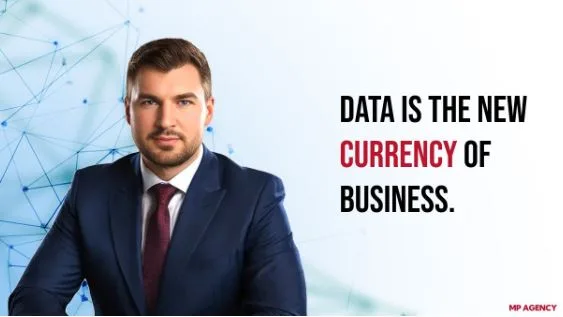Jack Truong on New to the World vs. New to the Market Solutions
With more than 30 years of top leadership roles to his credit, transformational CEO Jack “Reinvention” Truong knows better than most that the business world is filled with examples of now-famous products that started out as one thing and later became another, more profitable one. For instance, there’s the charming tale of how the Frisbie pie tin was serendipitously transformed by a group of rowdy Yale students zinging them discus-like across the quad from a humble pastry conveyance into the iconic plastic platter beloved by millions that remains a campus staple for games of ultimate Frisbee.
Then there are the less savory stories: In their original incarnations, both Coca-Cola and 7 Up contained mind-altering pharmaceutical substances. “Floor cleaner” and “cure for gonorrhea” were on the inaugural list of Listerine’s intended uses. The hair restorative minoxidil and erectile dysfunction drug Viagra (which recently has shown some promise in the fight against Alzheimer’s) were developed as blood pressure medications. But for each of these products, once discovered and leveraged, their unintended uses far eclipsed anything their creators ever envisioned.
Being able to detect the potential of new product iterations is something Jack Truong knows well. While his middle name isn’t truly “reinvention,” the appellation is apt.
During his tenure at 3M, Truong orchestrated the renaissance of the Post-it Note, a once essential office product that was becoming increasingly irrelevant in the digital age. Through research, Truong determined that although new technology was quickly outpacing traditional note-taking methods, there were still instances in which only a hand-written missive would do. After a revamp that included a new to the world stick-to-almost-anything adhesive and the introduction of a vast menu of color, shape, and size options, the Post-it Note rose from the ashes of near obscurity to become one of the most widely recognized brands on the planet.
Jack Truong on the Two Types of Innovation That Can Boost Your Bottom Line
Jack Truong’s track record proves he’s certainly no stranger to capitalizing on existing latent opportunities other eyes have missed. However, while such discernment is exceptionally useful, it’s only part of Truong’s larger skill set. In addition to reimagining readily available goods and services, with 11 unique U.S. patents under his belt, Truong is equally adept at delivering original products.
In a Sept. 11, 2023 Entrepreneur feature, Truong defined these two similar yet distinct types of innovation as “new-to-the-world solutions” and “new-to-the-market solutions.” He classified new-to-the-world solutions as a novel approach to an unmet consumer need that might result in a new product or product category. “New-to-the-world solutions require a deep understanding of consumers’ unmet needs and behaviors to accurately identify and address problems that consumers may not even realize they have,” he reported. “This means listening to what consumers don’t say and observing what they do. Based on this consumer understanding, technological know-how can make solutions.”
Meanwhile, he suggested new-to-the-market solutions, such as those successfully realized by minoxidil or the Frisbee, to reintroduce an existing product — either via new branding or a revised purpose — to an audience previously unfamiliar with it. “This does not require a fundamental change to the product itself,” Truong explained, “but rather an integration into a new demographic of consumers.”
How Nurturing Inclusion Sparks Bankable Ingenuity
Being able to perform adroitly in both arenas is what has helped Jack Truong turn market trends in his favor and drive remarkable revenue gains for global corporations time and again. He believes, however, for a business to meet or exceed its goals, management must conscientiously cultivate inclusive workplaces that encourage employees to be actively engaged in the creative process and inspired to put forth their best efforts.
“For either method of innovation to be successful, executive leadership must build and foster a culture that relentlessly prioritizes listening to the targeted consumers it aims to serve. Innovation can happen only by harnessing the power of people — especially those with different ways of thinking,” Truong declared.
In fact, workforce diversity is a resource that Jack Truong says cannot be valued strongly enough. Harnessing the power of multiple points of view can lead to increased productivity, as well as the possibility of groundbreaking ideas. That’s why maintaining a company culture — “one that respects individuals for who they are, where they come from, and what they bring to the table” — is so critical to success.
“The philosophy of true leadership is as simple as human anatomy,” Truong explained. “We all have two eyes and two ears but only one mouth. Managers should listen and observe more than they speak, ensuring that all voices are heard. The objective is to identify key similarities and to take advantage of the differences to arrive at the most innovative solutions.”
Why Companies Must Evolve and Diversify To Build a Profitable Future
Jack Truong believes business leaders must embrace innovation — whether they’re set on developing new products and services, or attempting to reimagine an existing brand — in order to survive and thrive in an ever-evolving marketplace. He warns that falling into the trap of sticking to a status quo that no longer serves the consumer is often one of the biggest obstacles to growth and progress.
“To drive continued, positive results, leaders must recognize that the whole must always be greater than the sum of the parts. When a business is stagnant in its ways, its ability to adjust to market changes, shifts in demand, and evolving customer preferences is significantly hampered. Silos must be broken down in favor of integration and collaboration. Redundancy eliminated. Old ways, sometimes thrown out for new methods. Problems must be addressed quickly and at the source, ideally when they are still minor issues,” he cautioned.
“The reality is that the speed at which business changes means that what we know today about work will be obsolete or irrelevant tomorrow. Drive a continuously improved mindset into the purpose-driven culture to stay relevant and hopefully ahead. Prioritize collaboration among global or cross-functional workforces, particularly in areas of customer-driven innovation. People from diverse backgrounds, catering to unique customer needs, think about things differently. But when they come together and share perspectives, they breathe new life into the company,” Truong affirmed. “This is true innovation. The kind of innovation that leads to long-term results in any economic climate.”




